Unlock Your Business Potential with Expert Tech Solutions
Why Choose Our Software Development Company?
200+
Skilled Professionals
150+
Proud Projects
50+
Clients globally

Take your business to the new heights with Experts.
Driving Growth for Enterprises and SMEs Alike
Exploring Infinite Horizons of Technology






What Customers say about us
Collaborations and Partnerships to Help You Scale
Technologies we use for clients

















































Gain valuable insights

10 Best AI Shopping Assistant Tools for E-commerce in 2025
E-commerce businesses have a common goal of enhancing the shopping experience for customers. While some brands find a way to understand what the customer is looking for, others don't. That said, we live in the age of artificial intelligence, which means we don't need to rely on guesswork.
This is where an AI shopping assistant comes in handy. It creates personalized recommendations and enhances search capability for added convenience. Here, we look at best shopping assistant tools for eCommerce in 2025.
How AI Shapes E-commerce Strategies
In a matter of years, AI has reshaped the way eCommerce sellers manage their operations. For instance, they are using generative AI to write compelling product descriptions. Customer support is now completely automated with the use of GPT4. It’s only a matter of time before AI creates paid ad campaigns and launches them on its own.
It's no surprise that the market value of AI in eCommerce retail was USD 6.63 Billion at the end of 2024 The value is projected to grow at a CAGR of 14.60% by 2032.
Here's how AI chatbot shopping assistants can benefit eCommerce businesses:
Personalized User Experience
When your goal is to stay ahead of the competition, personalization is your ticket to success. AI analyzes search patterns, behaviors, and conversations with chatbots to learn customer information. This information is then used to offer personalized product recommendations. Today, AI shopping assistants can help solve customer queries without human input. Not only that, but they also make it easy for customers to find the desired products using visual search.
Streamlined Operations
Apart from content creation, AI is also improving operational efficiency. E-commerce retailers are leveraging AI tools to reduce operational costs and reduce time to market. For instance, AI automates inventory management by analyzing supply and demand. It identifies raw materials and supplies you need and suggests the right vendors. AI can also analyze sales data and customer behavior.
Improved Sales
AI can also improve sales by providing eCommerce businesses with valuable insights. It analyzes competitor pricing strategies to help you optimize yours. Moreover, enhancing search capabilities using AI shopping assistants can also help boost sales. It can identify cross-selling and upselling opportunities to extract higher revenue.
What to Look for in AI Tools for E-commerce
With more and more AI solutions being introduced to the e-commerce market, how can you select the right one for your business?
Let’s start with the basics:
- Identify the problem you want to solve using the tool. Your eCommerce business can use AI to improve data analysis and enhance customer service.
- Learn whether the tool can improve efficiency or reduce operational costs.
- Evaluate the best AI-powered personal shopping assistant tools available in the market. Look for the capabilities that will enhance your operations.
- Check for accuracy, integration, and scalability. Determine whether the AI solution can integrate with your eCommerce infrastructure.
- Ideally, the AI tool must be able to work even when your business grows in terms of size, channels, or locations.
- Consider the appearance, customizability, and user-friendliness of the AI solution. Your teams should not find it difficult to get their heads around the tool’s functionality.
- Another important aspect of AI tools is that they learn from the data they process. Does the tool require large datasets or specific formats?
10 Best AI Shopping Assistant Tools for 2025
While every AI shopping assistant tool is built with the same motive in mind, they all have their pros and cons. At the end of the day, the right tool for your business is the one that fulfills your unique requirements.
1. shopdev Shopping Assistant
shopdev's AI-powered Shopping Assistant transforms e-commerce. It provides personalized product recommendations, enhancing discoverability, satisfaction, and conversions. Empower your customers with our advanced AI-powered chatbot.
Conversational shopping assistant assists customers through their online shopping journeys. Its algorithms detect keywords entered by customers to find the right products.
AI-powered shopping recommendations are provided to customers based on the search query.
Multimodal AI combines information from different sources of a product page to deliver accurate results.
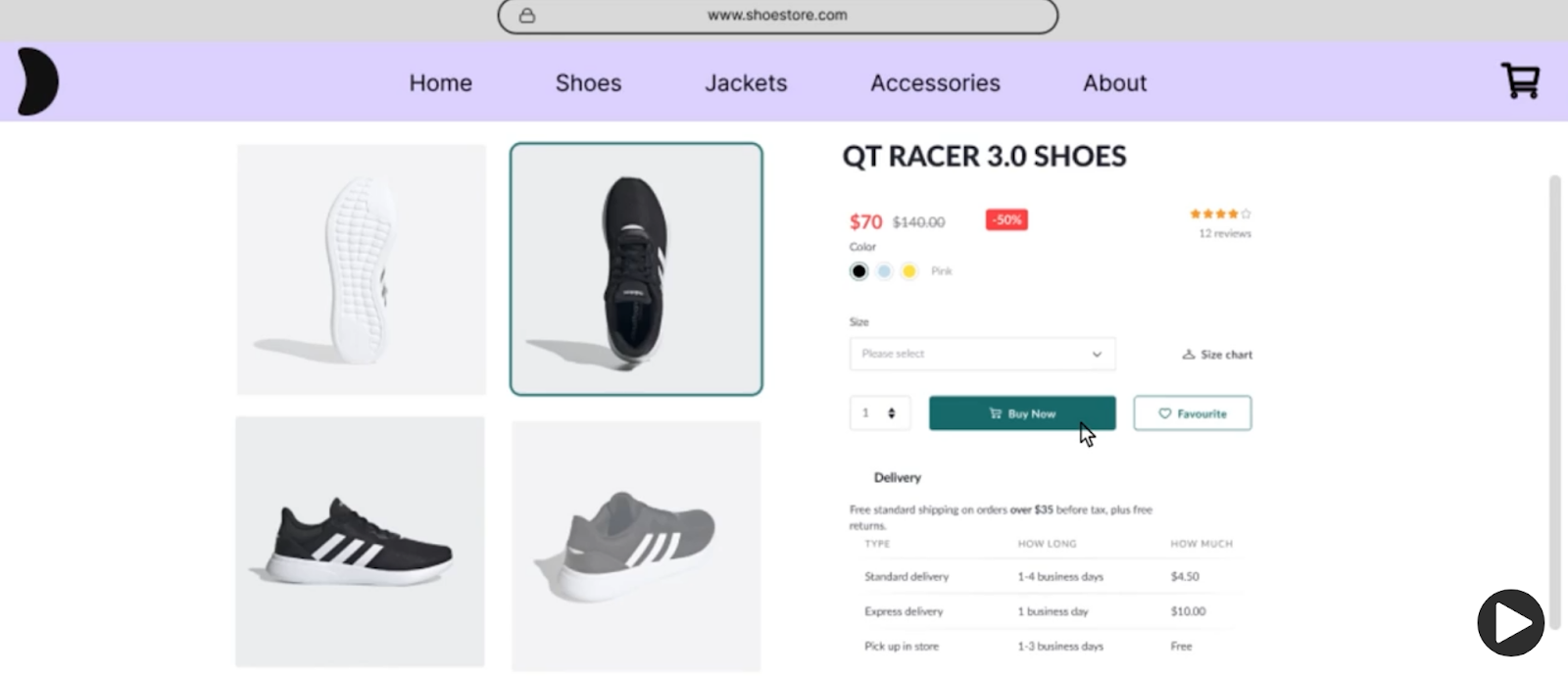
Features
- Personalized recommendations based on search history and preferences
- Object detection to differentiate between products
- Product discovery to find the right product for the customer
- Customizable UI for your brand’s design language
- Natural language processing to interpret search queries
- Computer vision to extract data from images
- Omnichannel support for connecting physical and online channels
- Multilingual support to serve a wide range of customers in different regions
2. Manifest
Manifest AI promises to improve sales by creating long-lasting relationships and is said to cut down the customer drop-off rate by 40%.

Natural language processing provides the capability to interpret any kind of customer query and help customers make purchase decisions. This means that the tool will find the right product even if the customer enters a vague description.
Image classification makes product search significantly easier and faster. To be on the safe side, Manifest AI provides 5 product recommendations as a result of the customer query.
Customizable UI allows eCommerce businesses to follow their brand guidelines.
Features
- Product discovery
- Natural language processing
- Image classification
- Customizable UI
- Multilingual support
3. Shopping Bot
ShoppingBot is a personalized chatbot that is trained on your website data to assist visitors in the best ways possible. It works around the clock to help eCommerce retailers enhance customer satisfaction and make them brand advocates.
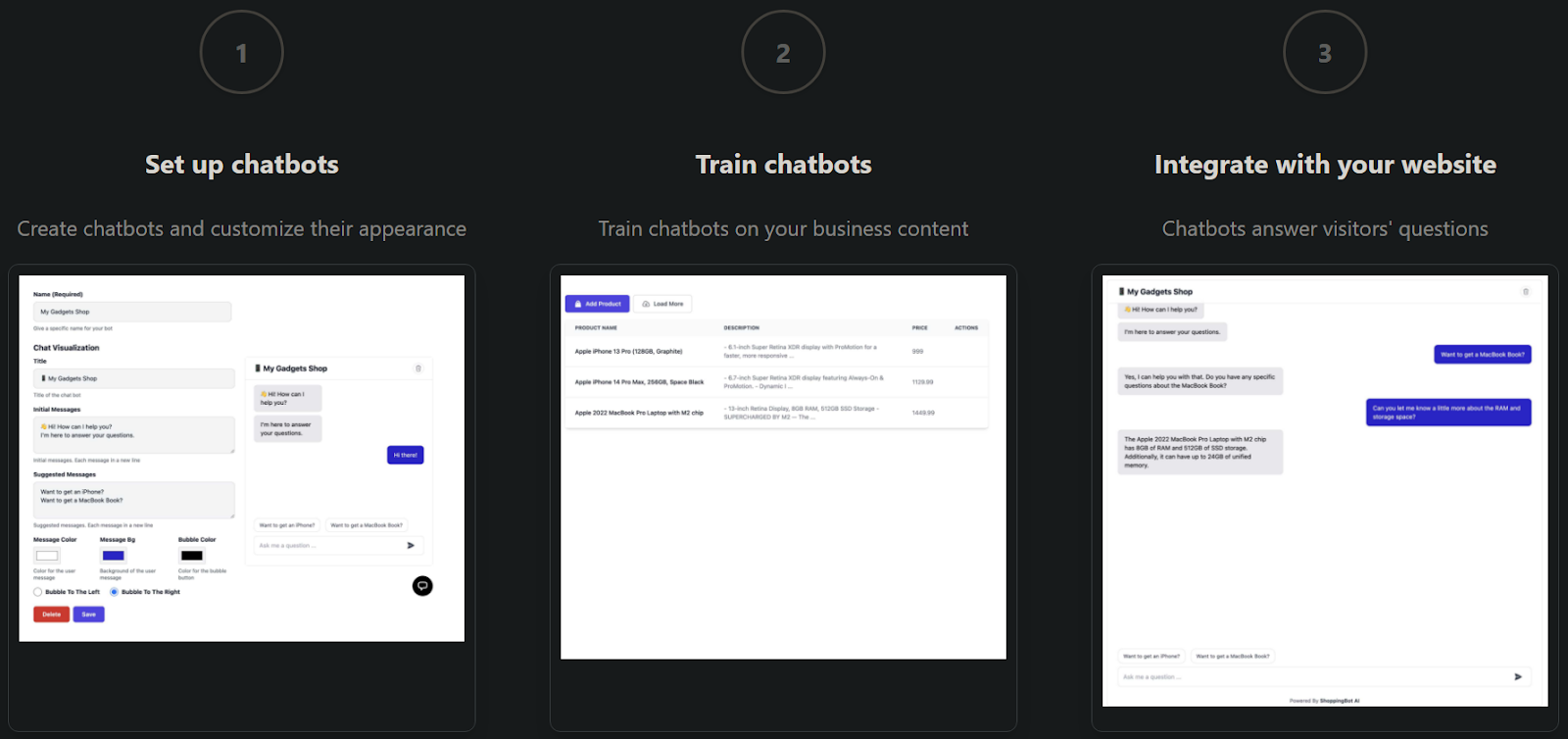
Easy to set up with email support for all users.
Ability to respond to customer queries within 48 business hours.
Strong security mechanisms with firewalls and encryptions to keep all of your data confidential.
Multilingual support is beneficial for eCommerce businesses operating out of multiple countries.
Features
- Personalized recommendations
- Secure conversations
- Product discovery
- Natural language processing
- Image classification
- Multilingual support
4. Shopmate
Shopmate is an AI chatbot that boasts 24/7 customer support, but it only needs 3 minutes to know your products and store information.
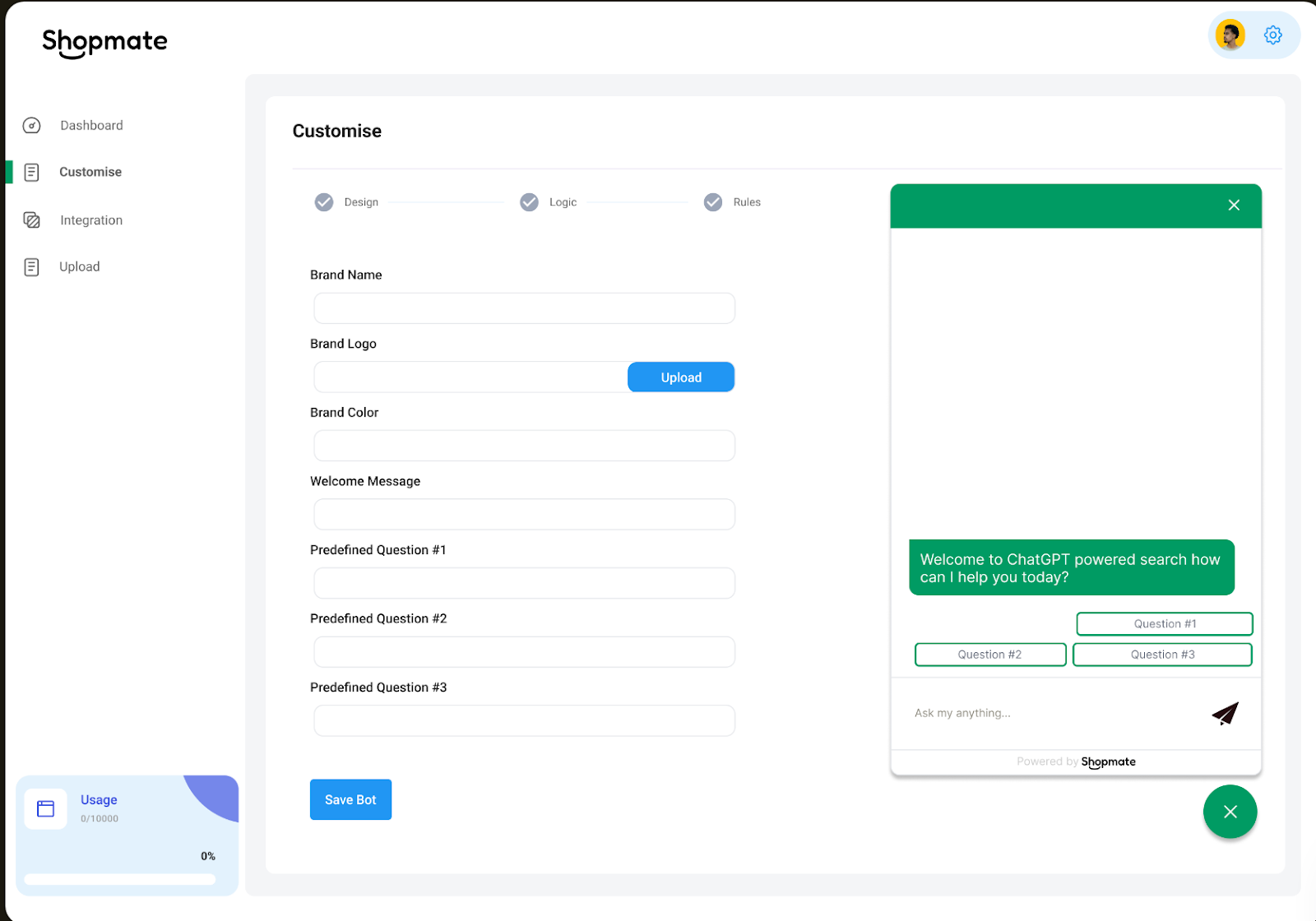
It analyzes your customers’ shopping history and preferences to intelligently recommend the right products.
Support handling feature allows you to answer customer queries instantly and efficiently.
Automatically analyze information from blogs, internal documentation, and FAQs on your site. This allows the AI shopping assistant to provide customers with accurate information.
Features
- Fast processing speeds
- 24/7 availability
- Personalized recommendations
- Secure conversations
- Product discovery
5. Intercom AI Chatbot
Intercom AI chatbot is focused on improving team efficiency and resolving customers’ concerns. The chatbot resolves 50% of support questions on its own, within an instant.
The chatbot named Fin is the result of a big breakthrough by Intercom in the field of sophisticated AI language models.
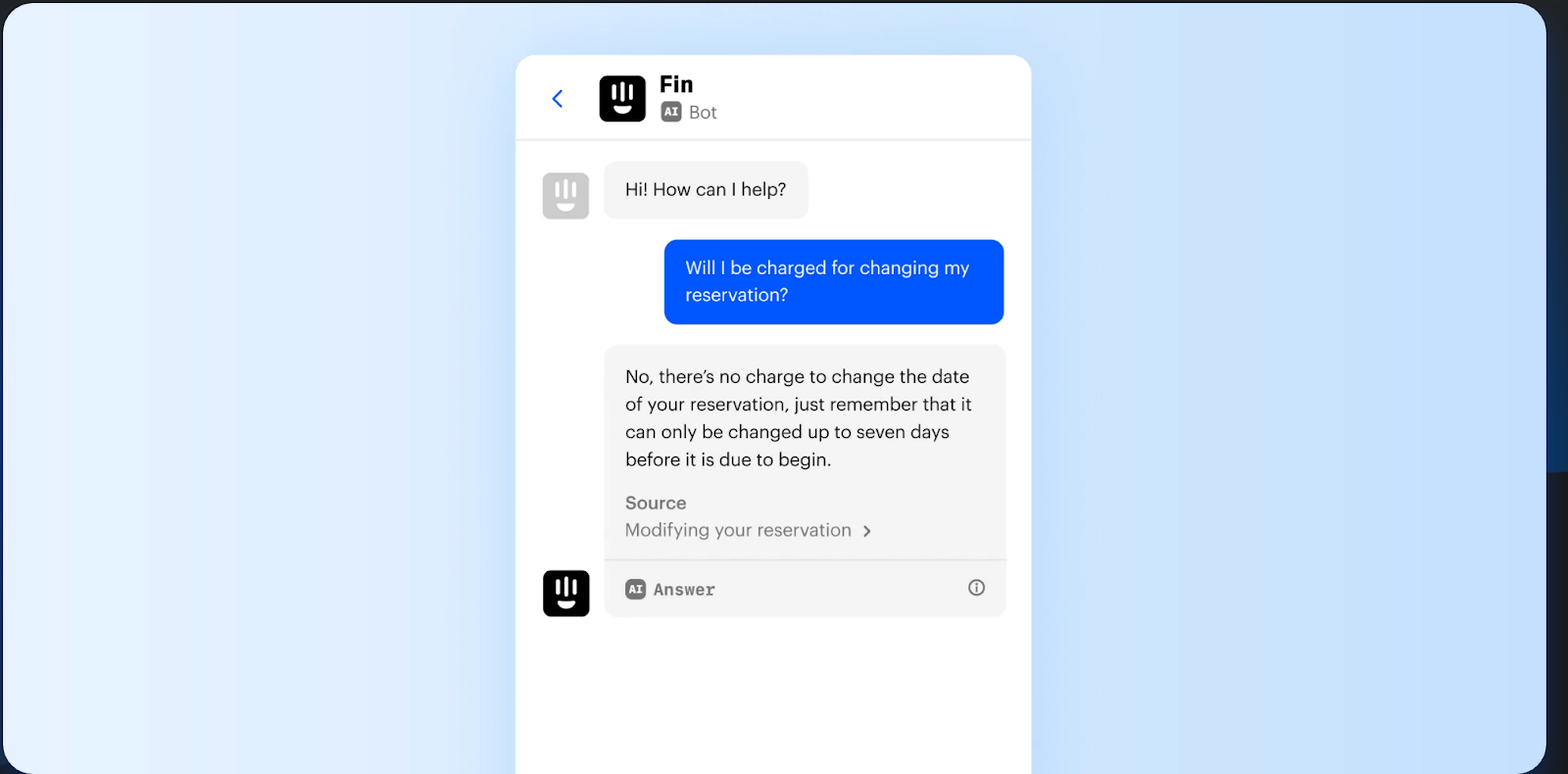
It provides accurate answers and maintains a conversational tone to make your customers feel at home.
Built-in safeguard to ensure that Fin only answers customer queries based on your brand’s guidelines.
It’s an AI tool you can trust with your brand’s secrets as your team can also monitor all of the bot’s responses.
Features
- Natural language processing
- Accurate product discovery
- Personalized recommendations
- Secure conversations
6. Infichat
Infichat is an AI-powered shopping chatbot that assists your customers in product searches. Customers can ask questions based on the descriptions, sizes, and colors of the product.

Personalized recommendations based on their shopping history.
24/7 availability makes it one of the best tools to enhance customer satisfaction and boost sales.
Minimal setup required. The AI tool is easy to use for any of your team members.
Features
- Seamless customer support
- Instant product discovery
- Personalized recommendations
- 24/7 availability
7. Tidio AI
Tidio AI, a user-friendly and functional live chat app comes with the best customer support out there. The chatbot and ticketing solution is purpose-built to serve mid-sized eCommerce businesses that wish to solve customer problems and improve sales.
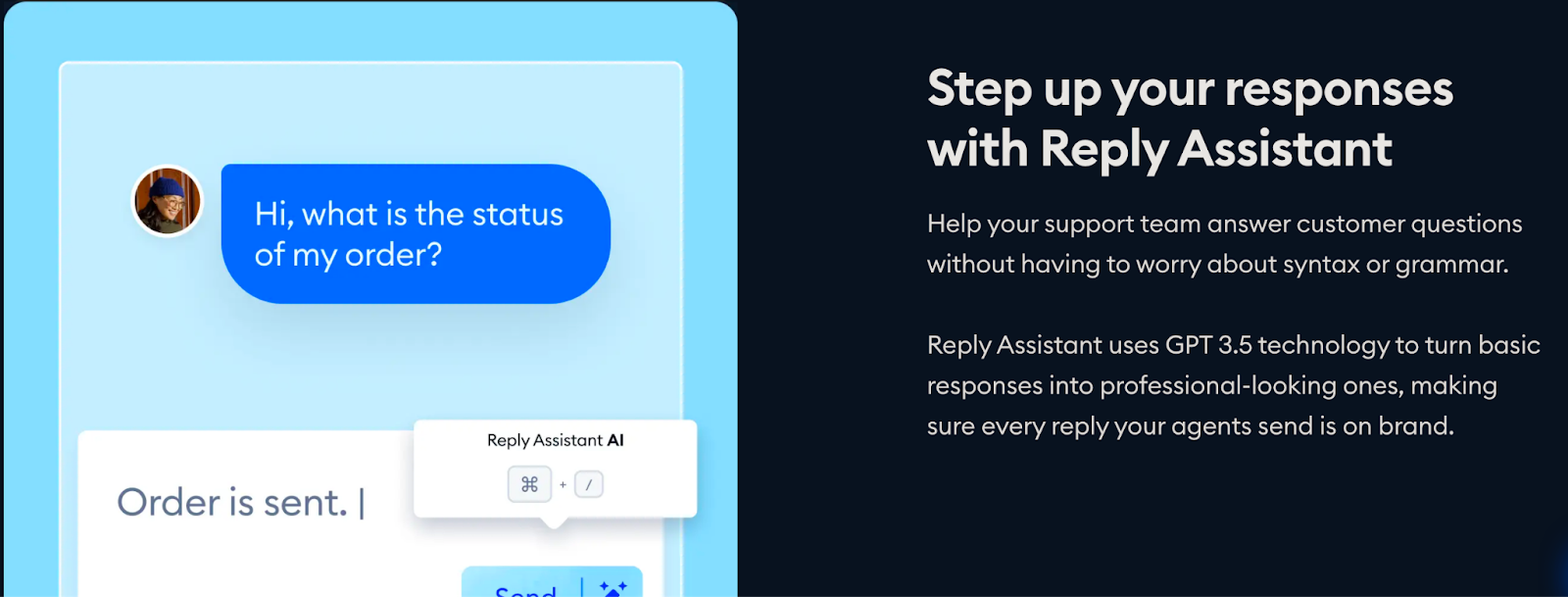
Customization based on your brand requirements.
Easy setup with extensive chatbot template library. These templates cover both sales and support scenarios, meaning your eCommerce brand doesn’t have to worry about responding to longer conversations.
The advanced AI behind Tidio is capable of holding long conversations with customers in case of highly-priced items.
Features
- Customization
- Built-in templates
- Seamless customer support
- Instant product discovery
8. Chatfuel
Chatfuel takes the convenience of setting up an AI chatbot to the next level. You don’t need any special skills in coding or programming languages. All you need to do is click a few buttons to select what you like the most.

Drag-and-drop builder for creating your customized chatbots.
Ready-to-use templates and free catalog for popular eCommerce platforms.
Easy to use with an organized UI which makes the work all the more productive.
Integrates with external systems to enhance automation and performance.
Features
- Drag-and-drop functionality
- Easy to use
- Customization
- Ready-to-use templates
- Free catalog
9. Verloop
Verloop enhances your customer support by responding to customers in the way they like. This includes voice conversations, WhatsApp, Instagram, and web applications just to name a few.

It is user-friendly and allows you to carry on conversations with up to 3 customers at the same time.
Your team can address more customer queries in less time.
You need fewer customer support executives to pay salaries to.
Features
- Customized bot solutions
- Personalized conversations
- One-to-many conversations
- Instant product discovery
- 24/7 availability
10. Giosg
Giosg is a sales acceleration solution that automates live chat using AI chatbots. Its interactive content helps build engaging online experiences for your shoppers and turns them into loyal customers.

Easy navigation and built-in tools for marketing, communication, and handling support tickets.
Interaction builder allows you to create elements and interactions with customers on your website when required.
Features
- Seamless customer support
- Easy navigation
- Interaction builder
- 24/7 availability
Key Takeaways
As technology evolves, eCommerce businesses are looking to speed up their operations. AI shopping assistants are quickly gaining popularity in the industry. Both businesses and customers benefit from personalized product suggestions and accurate search results.
If you’re looking to build brand loyalty through AI-based personalized recommendations, look no further. shopdev’s AI shopping assistant has everything you need to take your brand’s customer experience to the next level.

9 Generative AI Use Cases for Retail Success in 2024
Exceptional customer experience and loyalty are the keys to running a successful retail business in 2024. With thousands of brands to choose from, customers tend to fall for the ones that market their products with high-quality personalized content and offer the best customer service.
Thankfully, the retail industry now has a solution in the form of generative AI, which allows them to enhance their services while meeting their growth targets. According to McKinsey, generative AI can boost productivity in the retail sector by around 1-2% of global revenues, which is estimated to fall between $400B - $660B per year.
Read on to learn more about the applications of generative AI in retail.
Significance of Staying Updated with AI Trends
ChatGPT, Bard, Copy.AI, and DALL-E have quickly become buzzwords as businesses have begun to realize their potential in improving operational efficiency. But what if your business never knew about generative AI?
That’s right - success in the retail landscape is synonymous with staying updated. In order to stay one step ahead of your competition, you need to be aware of the latest trends in AI and keep an eye out for solutions that can improve your workflow.
Your customers are not willing to wait for webpages to load and carry out extensive searches to find the right product. Instead, they expect to see relevant content right from the moment they land on your brand website. In fact, 73% of customers expect your brand to know their preferences.
It's no surprise that 82% of organizations are currently using or considering generative AI as the technology that will transform their industry. It allows you to automate repetitive tasks and unlocks new business opportunities.
Generative AI Retail Use Cases
The use cases of generative AI in retail go far beyond enhancing customer experience and creating unique content. It provides business owners with valuable insights to make informed decisions while providing creative assistance in the form of unique texts, graphics, audio, and video.
The following are the most notable generative AI use cases for retail:
Personalized Product Recommendations
71% of customers want retailers to show personalized product recommendations, and 76% are frustrated when this is not the case. Generative AI allows you to analyze large amounts of customer data such as shopping history, items added to a cart, searches, and demographics.
This level of customer behavior analysis means that you can understand your buyers' personal preferences and likings. As a result, your product recommendations are not only more personalized, meaning you have much better chances of improving customer engagement.
The best example of the application of generative AI to create personalized recommendations can be seen in none other than Amazon. The retail giant uses generative AI to analyze customers’ past purchases and searches to offer highly personalized product recommendations. As a result, the shopping experience is enhanced and customers see products that are relevant to their interests.
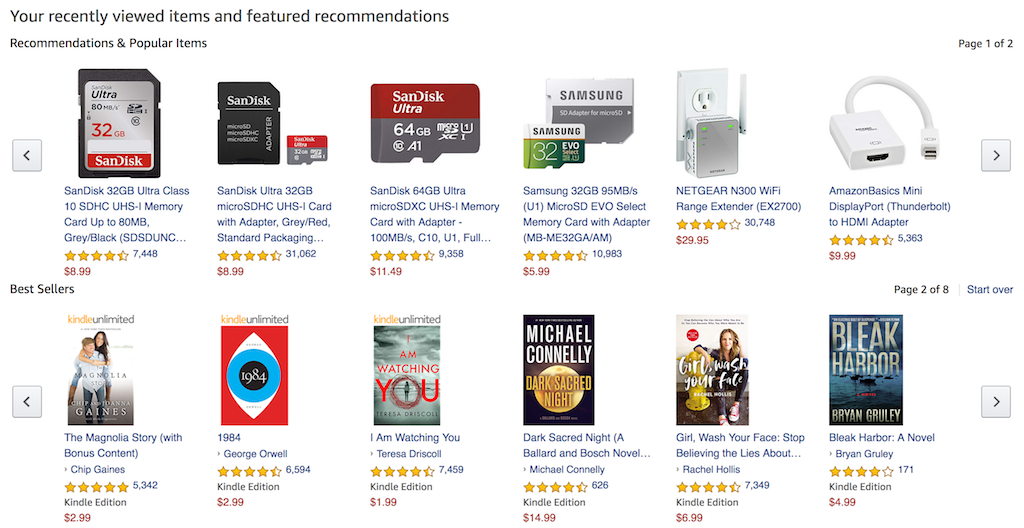
That being said, offering such recommendations is not possible without specialized software working its magic in the backend. For instance, shopdev’s very own Recommendation Engine, which is part of its next-generation operating system XStak, provides accurate and personalized suggestions to improve customer engagement and increase AOV in leading retail brands.
Virtual Try-Ons and Fittings
One of the problems customers face while shopping for clothes and other wearables online is knowing whether the size will fit perfectly. Now, retailers can offer customers immersive and interactive shopping experiences through generative models and computer vision. With generative AI, you can use conversational virtual assistants that help customers through their online shopping journeys.
Virtual try-ons and fittings with generative AI allow customers to see how the apparel and accessories, or even furniture items they buy online will fit them and their spaces. This reduces the hesitation that customers feel while shopping for wearables online and also eliminates the need to visit brick-and-mortar stores for try-ons. In this way, the use of generative AI in virtual try-ons reduces product return rates and improves customer satisfaction rates in retail.
Zolando is one of the leading fashion retail brands that has introduced a virtual try-on room for online shoppers.

Using machine learning models, computer vision, and other AI tools, the brand’s fitting room predicts the right sizes for customers. Although the virtual try-on model is still in its infancy, more than 30,000 customers have already tried it.
Dynamic Pricing Optimization
Dynamic pricing allows retailers to get a competitive advantage and target the right customers. Both price elevations and discounts account for a higher number of sales when done smartly. Speaking of smart solutions, you don’t need to look further than generative AI to get your prices right. Generative AI factors in customer data, demand, competitor pricing, and ongoing trends to optimize prices in real time.
Not only that, but retailers are also using generative AI to create personalized discounts based on customer data analysis. This helps curate custom shopping journeys and provide customers with relevant content, ultimately helping retailers boost sales and loyalty.
One of the best examples of dynamic pricing in retail is seen in Walmart Marketplace. The renowned retailer allows sellers to adjust their prices in real-time to stay competitive and boost their profits. This is made possible by a generative AI-based Repricer tool that allows third-party sellers to take control of their own dynamic pricing strategies. These strategies consider Walmart.com prices and the prices of the given products on other eCommerce sites to set up the right prices.
AI-Powered Visual Search
Visual search is a useful feature in retail that allows customers to find the right products using images uploaded to engines like Google Lens and Pinterest Lens. Generative AI plays a major role in making visual search possible, as it analyzes and extracts important features from images to help find similar products.
When customers upload images of products they want to find, the generative AI system picks particular features from the image to enhance product discovery and shows similar products available on the market. This significantly improves the shopping experience as customers do not have to try entering different product names to find what they need.
For example, Forever 21 has adopted the visual search feature to offer better shopping experiences to its customers. The brand is an advocate for the visual way of going about product searches and purchases. It aims to use visual product discovery with AI to make online shopping more convenient.

If you are thinking about incorporating a visual search feature in your retail brand, look no further. Our expert software engineers at shopdev have developed and rolled out an Image Similarity module as part of our retail operating system known as XStak. The system is helping retailers improve their brand image by enabling customers to easily find their desired products. Shoppers get instant access to product details and can make their purchases confidently.
Automated Customer Service and Chatbots
Providing customers with fast responses is key to improving satisfaction rates and gaining loyalty. Fortunately for retail businesses, generative AI can help automate customer services with the help of intelligent chatbots. AI can provide answers to customer queries based on their history and demographic information.
It also provides personalized support and recommendations with the help of conversational interfaces. In this use case, generative AI makes use of natural language processing and large language models (LLMs) to resolve customer queries as fast as possible. This helps create a flawless shopping experience and allows retailers to boost the efficiency of their customer support processes.
Retail brand American Eagle gives us an example of AI being put to use in customer support. The brand has demonstrated customer service innovation by leveraging AI to transform its in-store dressing rooms. By using computer vision and machine learning to analyze a customer’s clothing preferences, size, and skin tone, American Eagle offers them the most suitable products that are likely to fit well.

With the help of AI, the brand has significantly enhanced the shopping experience and made it highly personalized. As a result, retail customers get served in the best way possible using the best-in-breed technology.
Inventory Management and Demand Forecasting
Supply chain and shipping issues are the constant companions of every retail business. As these issues became common during the pandemic, more and more retailers have now adopted automated inventory management and demand forecasting systems. Here, generative AI helps retailers analyze sales data and manage their inventory effectively.
It forecasts trends by processing and analyzing historical data, customer demands, and competitor data to make better decisions while ordering inventory items. This helps prevent over-ordering, stockouts, and dead inventory - hence optimizing your supply chain and delivery processes.
H&M, a leading retail fashion brand, has implemented AI to improve inventory management. The AI algorithms capture data from search engines and blogs to learn about the latest fashion trends. This data clarifies how much customers are paying, what they are buying, and what kind of shopping channels they are using. This helps H&M make informed decisions about restocking popular items and smartly distributing them throughout their franchises.
Customer Sentiment Analysis
Knowing what your customers think about your brand and your products is crucial to improving sales. Sentiment analysis is one of the tactics that allows retailers to get a better understanding of how customers feel about their products. While the most basic way of performing sentiment analysis is to analyze online reviews, generative AI takes it to another level.
You can now analyze any kind of text with generative AI to understand whether your customers are demonstrating positive, negative, or neutral sentiments for your products. Furthermore, AI algorithms are now advanced enough to understand new texts apart from the data they are trained on.
As an example of a retail brand using AI for customer sentiment analysis, we look back at the biggest online retailer of them all - Amazon. The platform’s AI tool Amazon Comprehend analyzes customer sentiments from product reviews and categorizes them based on positive, negative, and neutral sentiments.
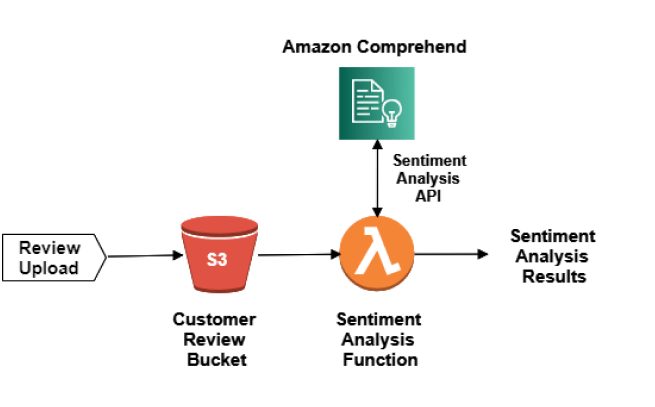
This helps Amazon identify loopholes and work on improving the products and services that generate negative sentiments. By better understanding what customers expect and want, the retail giant continues to improve its service quality.
Fraud Detection and Prevention
Last but not least, generative AI also finds a useful application in fraud detection and prevention. The retail sector is quite used to concerns of fake purchases and returns in fraudulent efforts to gain easy money. In such scenarios, generative AI algorithms can save retailers a lot of money by detecting fraudulent transactions.
Not only does AI prevent fraud from the customer end, but also identifies counterfeit products from unauthorized sellers in online marketplaces. The algorithms can pinpoint deviations from normal behavior in transactions and inconsistencies in product descriptions, hence helping prevent fraud.
Walmart demonstrates an example of AI being used for fraud prevention in retail. The retail chain has filed a patent for a machine learning system that can detect fraudulent transactions. The AI-based system is trained on past payment transfer data to detect deviations in payment patterns. It is capable of detecting a fraudulent payment transfer the moment it is initiated or received by a user.
AI Adoption and Integration Challenges For Retailers
Although generative AI is gaining popularity at a fast pace, many businesses are still facing challenges in utilizing its full potential. For instance, many startups and mid-sized retail businesses do not have the understanding and expertise required to implement AI in their systems.
Bias and Poor Quality Data
As mentioned earlier, generative AI models need to be trained on extensive, high-quality data to be able to produce accurate results. This is a challenge for retailers as they cannot guarantee that the data used to train the AI models will not be biased, unethical, or of poor quality.
Complexity of AI Models
Even when you think you can gather the right data, there is the next challenge of understanding and interpreting the generative AI model. Only AI experts can understand why a model makes a particular decision in a given scenario. For retailers, the decisions or outputs are often unexpected, making them question the reliability of AI tools.
That being said, making your mark in the competitive retail environment does require high brand visibility and exceptional customer service. In order to ensure that your brand stays on top, you need to consider these integration challenges as stepping stones towards business growth. After all, the result of successfully incorporating generative AI into your business will be a significant competitive advantage. And in retail, that is all you need.
Key Takeaways
Establishing a retail brand in 2024 requires a deep understanding of customer preferences and competitor strategies. By using generative AI, you can stay ahead of the competition and come up with not one but multiple strategies to pull more and more customers. As AI tools accelerate your business operations, you can offer your customers smooth shopping experiences that make them come back for more.

15 Generative AI Use Cases for Enterprise Businesses
In today’s tech-driven era, enterprise leaders find themselves at a crossroads where they have to deal with high-interest rates, inflation, and geopolitical concerns. They look for ways to accelerate product development and enhance service quality. One such ‘way’ is through a technological revelation you have already heard of - Generative AI.
Generative AI isn’t just the most buzz-worthy tech trend of 2023. Between 50% to 60% of all organizations have already adopted the disruptive technology.
Whether you consider customer relationship management (CRM), enterprise resource planning (ERP), product engineering, or service delivery, the applications of generative AI for enterprises just keep growing.
Generative AI Enterprise Use Cases
Generative AI is a subset of AI that goes beyond data analysis to create new and unique content. Based on patterns learned from the data they are trained with, generative AI tools like ChatGPT, DALL-E, and StyleGAN have demonstrated groundbreaking results.
In general, the enterprise use cases for generative AI revolve around automating, simplifying, and enhancing the quality of operational workflows.
Quick Automation of Project Workflows
When it comes to workflow automation, generative AI helps enterprises, especially marketing and sales-driven organizations with content creation. With automated content generation, businesses can speed up their entire digital marketing workflow. Generative AI can create a variety of engaging blog posts and ad copies, as well as personalized social media posts and product descriptions to target the right audience.
Simplify Repetitive Tasks for Employees
Regardless of the industry you pick, there are always going to be repetitive tasks that become a hurdle for innovation in enterprises. In this scenario, generative AI not only streamlines repetitive tasks for employees but also provides consistent and high-quality outputs. This means you have better customer engagement and a higher number of satisfied customers across the board.
Maintain High-Volume Production Standards
As generative AI continuously learns from the data it processes, it can interpret complex data to refine production standards. Whether you are on the factory floor or in any other part of the organization, generative AI equips you with the right tools to address quality standards in production.
How Enterprises Are Using Generative AI Today
Although the technology itself is the same for all, not all enterprises are able to use generative AI to its full potential. In some enterprises, it may be used as part of a conventional subscription-based tool to improve operations to a certain extent. In other cases, organizations are even building their own AI models to add to their tech stack.
Industries Embracing Generative AI
Let’s look at the ways different industries are utilizing the power of generative AI:
E-commerce and Retail
To understand the use of generative AI in retail, we take the example of Shopify. The eCommerce platform has now introduced a feature called Shopify Magic, which allows retailers to generate product descriptions using generative AI.
Users can input their desired tone and keyphrases for the product-related content they want to generate. Then, Shopify’s magic tool automatically generates a description based on the given parameters. In the background, of course, its generative AI working its magic.
Shopify makes the list of a handful of retail enterprises that have adopted generative AI, and even though Shopify Magic is still in its infancy, it is being well-received.
Software Development and FinTech
Where there is online shopping, there ought to be transactions. That brings us to two of the notable industries that have a high AI adoption rate - FinTech and software development.
Stripe is a renowned financial services SaaS provider that uses OpenAI’s GPT-4 to enhance its operations.
The generative AI tool allows Stripe to improve query management, summarization, documentation, and more. An internal feature called Stripe Docs is also available for users to enter their natural language queries related to documentation.
Upon submitting their query, users receive a response where Stripe’s AI summarizes and extracts important information in a human-like format. Moreover, the SaaS provider is also working with OpenAI and other generative AI companies to create smoother subscription and checkout processes for customers.
Travel and Hospitality
Here’s yet another industry that is using generative AI to improve customer experience. The travel and hospitality sector is all about ‘looking after’ the customers, and Expedia understands that.
Expedia uses the beta version of the popular generative AI tool ChatGPT for its travel planner. The AI integration allows Expedia users to ask questions and receive recommendations for travel, lodging, and other recreational activities. Not only that, but it also saves the suggested hotels and destinations using an AI-based feature. This means that customers can see what was recommended earlier and easily book their next destination.
In the context of enterprises, Expedia’s AI use case comes in handy for frequently-travelling employees. The solution streamlines the travel process and gives the employees more time for their high-priority tasks.

Generative AI Use Cases: Ethics and Compliance
Before we get into generative AI use cases, here’s a quick heads-up. With all the applications and developments in the field of generative AI, we often ignore the fact that the technology is still in its infancy. This means that there are still many unknown factors. For instance, the end-users are not aware of the way the AI models are trained, or what data is used to train them.
The fact is that generative AI models have a wide range of capabilities that can be very useful, but also very harmful when it comes to cybersecurity. Not to mention, the quickly growing skillset of generative AI models may result in them replacing skilled professionals.
Considerations for Ethical Use of Generative AI
With that said, what should enterprises do to ensure that they are ethically using generative AI? Here are a few tips to get started:
- Do not use sensitive data to train an AI model. The inputs must be depersonalized and non-sensitive
- Stay updated with current generative AI trends so that you know which tools are credible
- Set up an ethics policy for AI usage in your enterprise. It should guide internal users to use the right AI tools
- Provide training to all employees so that they stay one step ahead of AI and use it to advance in their careers.
15 Implementable Generative AI Use Cases
Code Generation, Documentation, and QA
Generative AI assists software developers and programmers by writing and completing code faster than ever before. Software teams use AI tools to write code in multiple languages and speed up their development process, hence increasing their productivity and efficiency.
Once the code is written, the most useful and quickly emerging use case of generative AI comes into play. Quality assurance is one of the most crucial phases in software development. With generative AI, it becomes as easy as implementing the right tools and entering the right prompts. AI models are capable of fixing bugs, analyze test cases, and also create various types of documentation.
Furthermore, generative AI-based coding tools are now advancing beyond the basics to help non-developers write code by using simple queries. By entering scenario-based queries in natural language, they can leverage generative AI to write code that works. This is a giant leap in the world of enterprises that are aiming at tech democratization.
Product and App Development
While writing code speeds up the process for software developers, generative AI is also being used to develop entire apps and products. From analyzing material options to proposing new designs, it has given a futuristic angle to product development. With generative AI, iterative product development teams can make design refinements in real and perform more efficiently.
Apart from assisting the development of digital products and apps, generative AI also finds use cases in semiconductor chip manufacturing and design. Not to mention, it has significantly improved customer support services by allowing companies to build chatbots based on OpenAI foundation models. Examples of such solutions include GPT-4, A121 Labs, Stability AI, and MOSTLY AI.
Blog and Social Media Content Writing
As we have seen earlier in this blog, generative AI is empowering marketing enterprises with automated content creation. Every marketing team aims to save time and resources and have a favorable time-to-market.
Generative AI is good news for marketers, as its large language models (LLMs) allow you to create unique content for blog posts and social media platforms. It also helps create engaging content for business websites and prevents you from missing out on details when writing product descriptions.
Most of these AI models allow users to provide instructions and specify the tone, voice, and other aspects of the content they want to generate. Enterprise users can even input past content written by their company and prompt the AI tool to follow the same tone. Examples of these AI tools include HubSpot Content Assistant, Phrasee, Notion AI, and Jasper.
Inbound and Outbound Marketing Communication
Apart from blog and social posts, marketing teams also need to enhance their inbound and outbound marketing campaigns. The traditional process requires employees to manually create contextualized emails and chats. These are then sent to current and prospective customers. Generative AI solutions are now automating this process by creating and sending emails.
Not only that, but generative AI can also qualify certain contacts for the next step in the enterprise’s customer relationship management (CRM) platform. Examples of AI solutions enhancing project management capabilities in enterprises include Salesforce Einstein GPT and Twain.
Graphic Design and Video Marketing
Graphic designing and video creation are also crucial to a successful digital marketing team. Generative AI helps creative designers by generating realistic animations, images, and audio that can improve graphic designing and video marketing projects.
In addition to videos and images, some generative AI service providers also offer avatars and voice synthesis features. These allow marketers to complete their video production without the need for actors, expertise, or equipment.
While the avatars and voices being offered today still require some manual input to replace real human speakers, it is still a step ahead in the right direction. Rephrase.ai, Diagram, Synthesia, and Lightricks are examples of AI solutions offering graphic design and video marketing services.
Entertainment Media Generation
Moving on, the entertainment media industry is probably the one to benefit most from high-quality and realistic AI-generated images. Generative AI finds applications in movie making, video games, virtual storytelling, VR experiences, and podcast generation.
The entertainment industry finds it convenient to use these AI tools instead of setting up cameras, editing footage, and recording audio. According to tech experts, generative AI is all set to revolutionize film content creation, script writing, and video production. As we speak, AI tools like Latitude Voyage, Plask, Charisma, and Stability AI’s Stable Diffusion are being used to create interactive non-player characters (NPCs).
Performance Management and Employee Training
Apart from enhancing operational efficiency and accelerating processes, generative AI is also being used to analyze business performance and train employees. For instance, generative AI can be used in contact centers of an enterprise to analyze call documentation.
By using sentiment analysis, generative AI can provide business owners with valuable insights. With this information, you can assess customer service quality and set up training sessions for employees. Conversational AI tools like Gong, CoachHub AIMY, and Anthropic Claude allow your employees to get performance feedback and understand areas for improvement.
Reporting and Data Analytics
One of the reasons why generative AI has quickly become a part of enterprise reporting is its ability to process massive amounts of data. When it comes to analysis of unstructured and qualitative data, nothing can match the power of generative AI. It is improving business reporting and intelligence by providing real-time data-driven insights.
Of the areas where generative AI is being used, data narratives are probably the most interesting. There are highly contextualized explanations of datasets provided by AI that are far more advanced than typical visualizations and data dashboards. Examples of such AI solutions include Narrative BI, Dremio, and SparkBeyond Discovery.
Customer Support and Customer Experience
Generative AI chatbots aren’t really a new thing. They handle customer service queries along with virtual assistants all day long. That being said, the chatbots that have been used for straightforward customer service engagements are not as advanced as generative AI.
Now, with advanced AI models, you get additional resources to provide comprehensive human-like answers without manual inputs. Enterprises that have adopted this technology in its early days are building their own customer service solutions using OpenAI’s ChatGPT and API. Forethought SupportGPT, Gridspace, and IBM Watson Assistant are some of the examples of chatbots that are enhancing customer experience in enterprises.
Pharmaceutical Drug Discovery
Generative AI isn’t just the future of the pharmaceutical industry. It is already being used to enhance the efficiency of drug discovery and design operations. Using the valuable insights provided by generative AI, scientists are creating novel molecules and discovering disordered proteins. They are also designing better drugs and predicting clinical trial results using the groundbreaking technology.
This particular enterprise use case of generative AI is expected to grow by a significant margin in the years to come. Entos, Aqemia, New Equilibrium Biosciences, and Insilico Medicine are a few examples of AI tools being used in the pharmaceutical industry.
Medical Diagnostics and Imaging
When you consider the field of medical diagnosis and imaging, generative AI is still a relatively new concept. However, its potential is growing exponentially. As AI-based image processing and generation tools become more capable of zooming into medical images, professionals can now get a better understanding of areas they haven’t seen so clearly before.
Even in its infancy, generative AI is performing medical image analysis and offering basic diagnostics. Well-known tools like ChatGPT and GPT-4 are being tested in the pathology space, with ChatGPT even passing the U.S. Medical Licensing Exam. That said, the results still need to be cross checked with medical professionals and analyzed for anomalies. Other examples of AI solutions in medical are Paige.ai and Google Med-PaLM 2.
Consumer-Friendly Synthetic Data Generation
Considering the potential security concerns that can be caused by generative AI, you may assume that this is just one of its negative aspects. But hold on - what if we could use the same factor to improve the data being generated and make it more consumer-friendly?
When you get your prompts right, generative AI will provide you exactly what you’re looking for. It can be used to create synthetic copies of data that is actually sensitive, hence allowing analysts to get what they need without being non-compliant. With these copies, data analysts and other enterprise members can create their own AI models. Examples of synthetic data generation tools include Infinity AI, Syntho Engine, Synthesis AI, and MOSTLY AI.
Smart Manufacturing and Predictive Maintenance
The manufacturing industry sees another use case of generative AI for enterprises. As it continues to transform modern manufacturing, generative AI is helping workers innovate and achieve their production goals. With predictive maintenance, generative AI models can create to-do lists and timelines to assists enterprises in improving their workflow. These models also suggest areas for improvement and simplify your process of collecting data from different parts of your production line.
Moreover, another process called inverse design also uses generative AI to analyze what’s missing in a process. Tools like Clarifai, C3 Generative AI Product Suite, and Biomatter can identify missing materials from a process and generate their replacement to suit the requirements.
Fraud Detection and Risk Management
Another area of enterprises that must not be missed is fraud detection and risk management. Although your business might get lucky without such measures, it’s always better to have AI by your side. In this use case, generative AI analyzes transaction data and identifies anomalies in the patterns. It helps in fraud detection to ensure smooth operations in finance and insurance sectors.
As of now, enterprises must invest in anomaly and fraud detection solutions that use generative AI to catch even the slightest deviation in transactional patterns. Simplifai InsuranceGPT and Docugami are the best known examples of such solutions.
Optimized Enterprise Search and Knowledge Base
Where there are enterprise tools, there needs to be documentation and a knowledge base. Generative AI is helping enterprises enhance both internal and external search capabilities. AI tools like Elasticsearch Relevance Engine, Glean, and Coveo Relevance Generative Answering not only identify enterprise resources for users but also company applications, web properties, and messaging tools.
Visitors can get a self-service by using generative AI tools incorporated into business websites and customer-facing displays. They can get answers to their brand-related questions and also get the right resources using AI chatbots.
Key Takeaways
Considering the rapid evolution of AI, it's not hard to guess that there will be even more enterprise use cases for generative AI in the days to come. As AI technology develops new capabilities, enterprises will have more opportunities to improve their operations. If you are an enterprise looking to adopt generative AI, you need to find the right model that works in your specific use case and aligns with your objectives as well as your customers.
Book your free 40-minute
consultation with us.
Let's have a call and discuss your product.





























































%202.avif)














